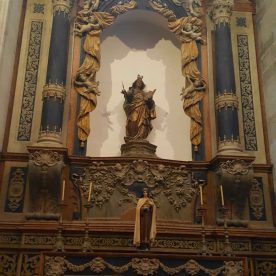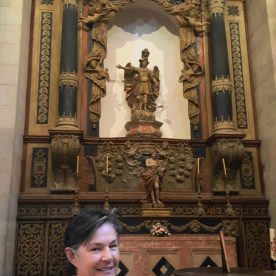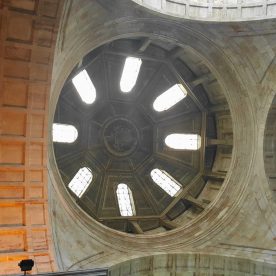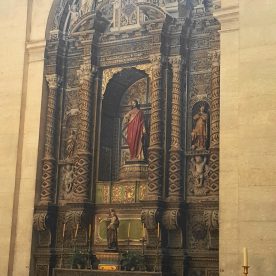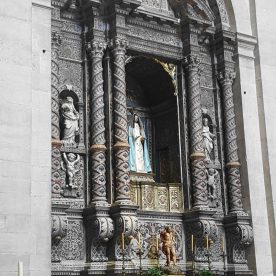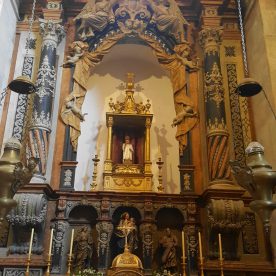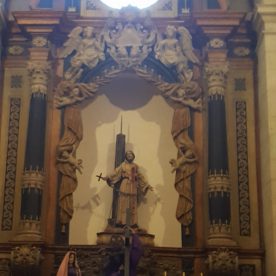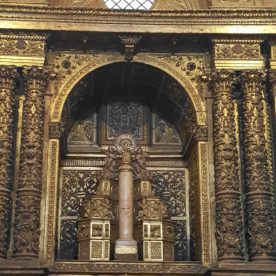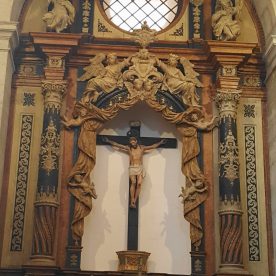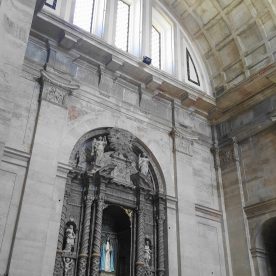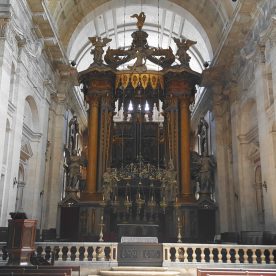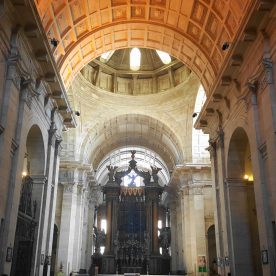The original Monastery of São Vicente de Fora was founded around 1147 by the first Portuguese King, Afonso Henriques, for the Augustinian Order. The Monastery, built in Romanesque style outside the city walls, was one of the most important monastic foundations in mediaeval Portugal. It is dedicated to Saint Vincent of Saragossa, patron saint of Lisbon, whose relics were brought from the Algarve to Lisbon in the 12th century.
The present buildings are the result of a reconstruction ordered by King Philip II of Spain, who had become King of Portugal (as Philip I) after a succession crisis in 1580. The church of the monastery was built between 1582 and 1629, while other monastery buildings were finished only in the 18th century. The author of the design of the church is thought to be the Italian Jesuit Filippo Terzi and/or the Spaniard Juan de Herrera. The plans were followed and modified by Leonardo Turriano, Baltazar Álvares, Pedro Nunes Tinoco and João Nunes Tinoco.
The church of the Monastery has a majestic, austere façade that follows the later Renaissance style known as Mannerism. The façade, attributed to Baltazar Álvares, has several niches with statues of saints and is flanked by two towers (a model that would become widespread in Portugal). The lower part of the façade has three arches that lead to the galilee (entrance hall). The floorplan of the church reveals a Latin cross building with a one-aisled nave with lateral chapels. The church is covered by barrel vaulting and has a huge dome over the crossing. The general design of the church interior follows that of the prototypic church of Il Gesù, in Rome.
The beautiful main altarpiece is a Baroque work of the 18th century by one of the best Portuguese sculptors, Joaquim Machado de Castro. The altarpiece has the shape of a baldachin and is decorated with a large number of statues. The church also boasts several fine altarpieces in the lateral chapels.
The Monastery buildings are reached through a magnificent baroque portal, located beside the church façade. Inside, the entrance is decorated with blue-white 18th century tiles that tell the history of the Monastery, including scenes of the Siege of Lisbon in 1147. The ceiling of the room has an illusionistic painting executed in 1710 by the Italian Vincenzo Baccarelli. The sacristy of the Monastery is exuberantly decorated with polychromed marble and painting. The cloisters are also notable for the 18th century tiles that recount fables of La Fontaine, among other themes.
